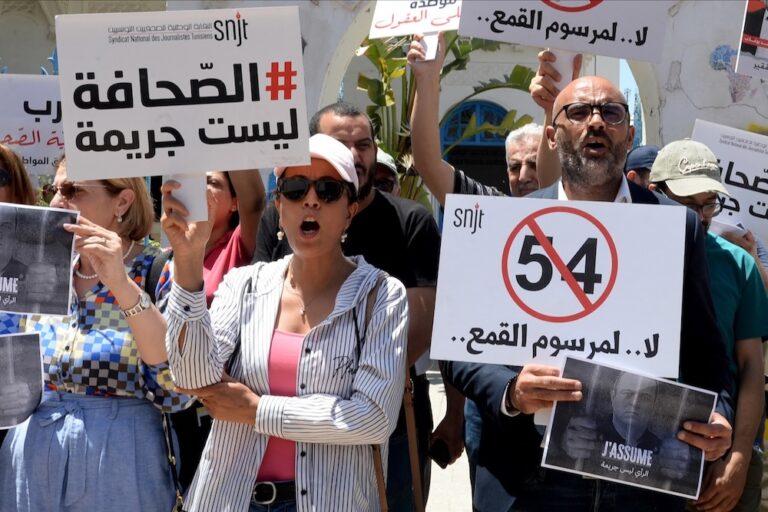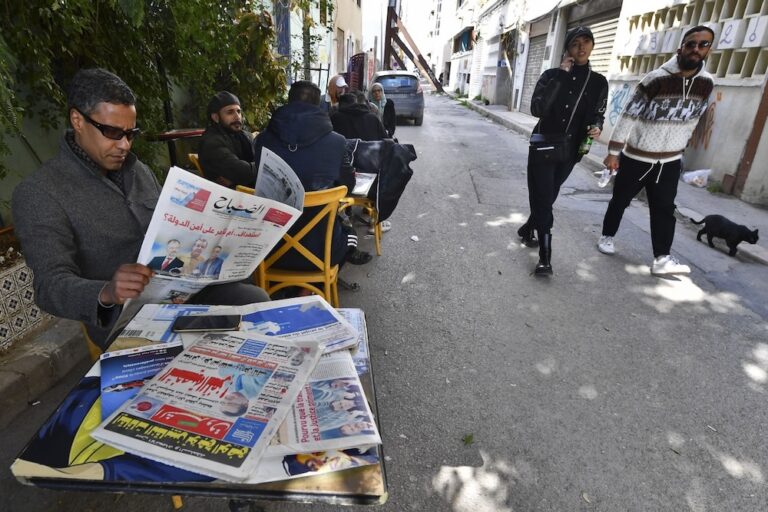Shortly after the president's address, websites that had been blocked for years became accessible.
(RSF/IFEX) – 14 January 2011 – Reporters Without Borders takes cautious note of President Zine el-Abidine Ben Ali’s promises yesterday in an address to the nation, in which he announced “complete freedom of information” and Internet access.
The president’s words must now be followed by action. Tunisian and foreign journalists and bloggers must be free to cover and comment on the political and social situation at this critical moment for Tunisia, and in the months and years to come.
Shortly after the president’s televised address, an enormous amount of Internet censorship seemed to be lifted. Websites that had been blocked for years inside Tunisia became accessible. They included not only Dailymotion and YouTube but also the sites of the independent radio station, Radio Kalima, and the opposition Progressive Democratic Party (PDP).
Hundreds of Facebook pages relating to the unrest in Sidi Bouzid that had been blocked in recent weeks are also now accessible. “La régente de Carthage,” a book about the president’s wife by Nicolas Beau and Catherine Graciet, is now available via Facebook, as is Mohamed Bouebdelli’s book, “The day I realised that Tunisia is not a free country”. The French daily Le Monde’s website became accessible last night after being blocked for months.
Shortly after the end of the president’s speech, Reporters Without Borders was relieved to learn that two journalists were released in the evening. They were Nizar Ben Hassen of Radio Kalima, who was arrested on 11 January, and Wissem Sghaier, the editor of the “Youth” section of the opposition weekly Al-Maouqif, who was arrested on 7 January. Two Internet users who had been arrested on 6 January, Slim Amamou and Azyz Amamy, were also released last night.
These measures are clearly positive and seem to constitute a sign of goodwill on the part of the authorities. But caution is necessary. What about the cyber police? Is this the end of the Internet censorship department, which Tunisians call Ammar 404? Or is it just a temporary respite? Will Tunisian Internet users now be placed under surveillance? What about the print media? Tunisia has just three opposition newspapers – Al-Mouatinoun, Al-Maouqif and Attariq Al-Jadid – and all three have the utmost difficulty in getting printed and distributed.
What about radio and TV? Tunisia’s broadcast media are controlled by the government or are run by government supporters. The system of granting broadcast licences is completely lacking in transparency.
And what about the two journalists who are still detained, Hammama Hammami and Ammar Amroussia?
“President Ben Ali, we have listened to your speech but we want action,” Reporters Without Borders secretary-general Jean-François Julliard said today. “It takes more than restoring access to YouTube and Dailymotion to guarantee freedom of expression in your country.”
The following persons are all reportedly still detained:
– Hamma Hammami, the former editor of the banned newspaper Alternatives and spokesman of the Tunisian Workers Communist party. Violence was used when he was arrested at his home on 12 January.
– Mohamed Mzem, a lawyer and moderator of a group campaigning against Tunisia’s censorship of Facebook, and Monia Abid, a teacher. They were also arrested on 12 January. Several moderators of Facebook pages linked to the protests were reportedly arrested in the past few days.
– Ammar Amroussia, who covered the recent events in Sidi Bouzid for the banned newspaper Al-Badil and its website ( http://www.albadil.org/ ), and participated in many solidarity protests in Gafsa (400 km south of the capital), condemning corruption and urging his compatriots to combat the “dictatorship.” Arrested on 29 December and held in Gafsa prison, he is facing the possibility of close to 20 years in prison on a range of charges under articles 42, 44 and 49 of the press code, articles 121, 131, 132, 220-b, 315 and 316 of the criminal code and article 26 of a 1969 law about the “organization of public meetings, processions, exhibitions, demonstrations and gatherings.”


